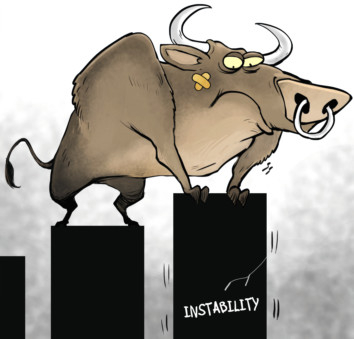It is now a decade since the international financial crash in the autumn of 2008. Ten years on, the fallout from that dramatic period has been huge, and has extended far beyond the economy. For the last decade has also witnessed very significant international political turmoil. What has captured most headlines — in recent years — is the rise of anti-establishment populists riding the anti-globalisation mood across much of the world.
This may have reached its apotheosis in 2016 with the election of Donald Trump as the President of the United States, and the United Kingdom voting to leave the European Union (EU). What was so striking about both these events was that two of the countries previously known for their political stability, and being traditional rule-makers of the international order, made the world a significantly more uncertain place.
However, while 2016 may prove to be a potentially defining year for historians, significant political volatility has actually been a feature of international politics for much of the post-crisis period. This had been predicted, to some degree, as early as February 2009 when the then-US director of National Intelligence, Admiral Dennis Blair, asserted that “the primary US security concern is now the destabilising global political fallout” of the financial crisis; and the then-US secretary of state, Hillary Clinton, had argued that “this economic crisis, left unresolved ... will upend governments, [and] it will unfortunately breed instability”.
One of the interesting features of the political turmoil since then is that it has impacted emerging and developed markets alike. Most eye-catching have been the political revolutions, popular uprisings and protests in emerging markets. This includes the so-called ‘Arab Spring’ that began in Tunisia and subsequently spread to include revolutionary changes of power in Egypt and Libya; transfer of power in Yemen; plus demonstrations and uprisings in countries as disparate as Algeria and Morocco. There was also the Ukrainian revolution of 2014, which resulted in the ousting of pro-Moscow President Viktor Yanukovych; the Brazilian demonstrations of 2013, the largest in the country for some two decades; and the 2011 Azerbaijani protests against the government.
Developed countries have also taken a political hit too. In Europe, for instance, millions have taken to the streets and administrations in more than half of the 27 European Union states fell or were voted out of office from Spring 2010 to 2012 alone. Within the core Eurozone, 11 of 14 governments collapsed or lost elections during that same two years.
To be sure, this broad range of political instability has diverse origins with economic issues not being the only driver. Unrest in the Arab world stemmed from deep-seated political and socio-economic discontent that pre-dates the financial crisis. Post-2008, however, factors including liquidity crunches, increased food prices and unemployment spikes have exacerbated these longer-standing grievances.
In Europe, meanwhile, the role of economic downturn and austerity was central to unrest in numerous countries, especially those most impacted by the Eurozone crisis. Even here though, unrest has tapped into pre-existing disquiet with established political parties, hence the meteoric rise of new groups like Syriza in Greece.
Nevertheless, this disparate range of political disruption across the world has reportedly been described as “a revolutionary wave, like 1848” by Sir Nigel Inkster, the former director of operations for the UK Secret Intelligence Service. Others have compared the situation to 1914, 1968 and 1989.
Whatever the validity of these historical analogies, it is clear that there are some genuinely new factors to the post-2008 period. This includes the disruptive role of social media and other technologies.
There remains a debate about how instrumental social media has been in fomenting political instability. However, whether one sees it as an essential component that translated discontent into concrete action, or accentuated what was already-inevitable, indisputably it has played an enabling, mobilising role that may only grow as technology advances and proliferates.
Going forward, a key question is whether political instability will now tail off, especially if economic growth sustains itself in much of the world in coming years.
While this is possible, the consequences of the financial crisis endure for many, including the young. In Europe, for instance, German Chancellor Angela Merkel had spoken of her fears of a “lost generation” with youth unemployment spiking above 50 per cent in Greece and Spain. This puts many at risk of long-term damage to earnings potential and job prospects, fuelling discontent that may well continue to fuel protest.
Secondly, the political salience of economic inequality has also grown in many countries. Both the populist Right, and the Left, have capitalised on this factor as shown by Trump’s 2016 win, and the 2018 landslide victory of Andres Manuel Lopez Obrador in Mexico — both victories framed in the anti-globalisation backlash of the moment.
As the 10th anniversary of the 2008 global financial meltdown approaches, significant prospect of political volatility remains across the world in 2018 and beyond. While circumstances will vary from country to country, future political instability will potentially be fuelled not just by economic inequality and legacies of the financial crisis — such as higher youth unemployment — but also longer-standing political and socio-economic discontent, which social media is giving fresh impetus to.
Andrew Hammond is an Associate at LSE IDEAS at the London School of Economics.













